A Crash Course in Creativity
Vehicle History Report
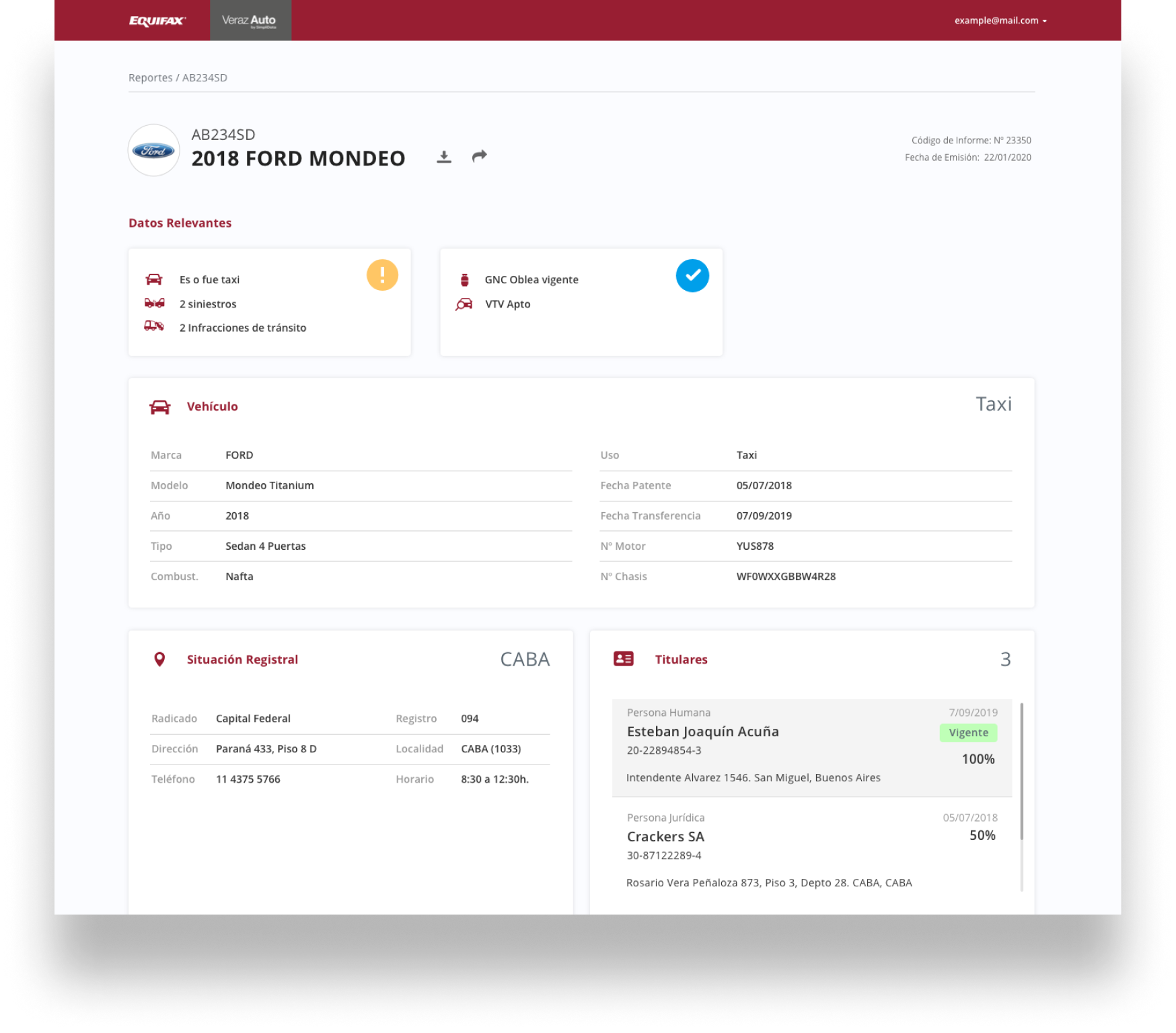
Vehicle History Report

IT Company
UX/UI Designer, Facilitator and Researcher.
Argentina
1 week
2019
With only a week to present a prototype for the Vehicle History Report, the Design Sprint methodology emerged as the ideal approach. This incredible opportunity allowed me to discover new ways to tackle time constraints, work efficiently, and make quick decisions.
Argentines are not used to buying vehicle history reports.
Design a Report of used car and determine the optimal moment in the user journey to offer a report, and use this insight to enhance the purchasing experience.

Considering time and space limitations, we decided to dedicate a full week to advancing the project remotely. This intensive week-long session aimed to gather valuable insights and set a clear direction for the project's progression.
We focused on two key aspects:
The testing phase for the Design Report involved four pre-selected users.
The consultation on used cars increased by 17% during 2020.
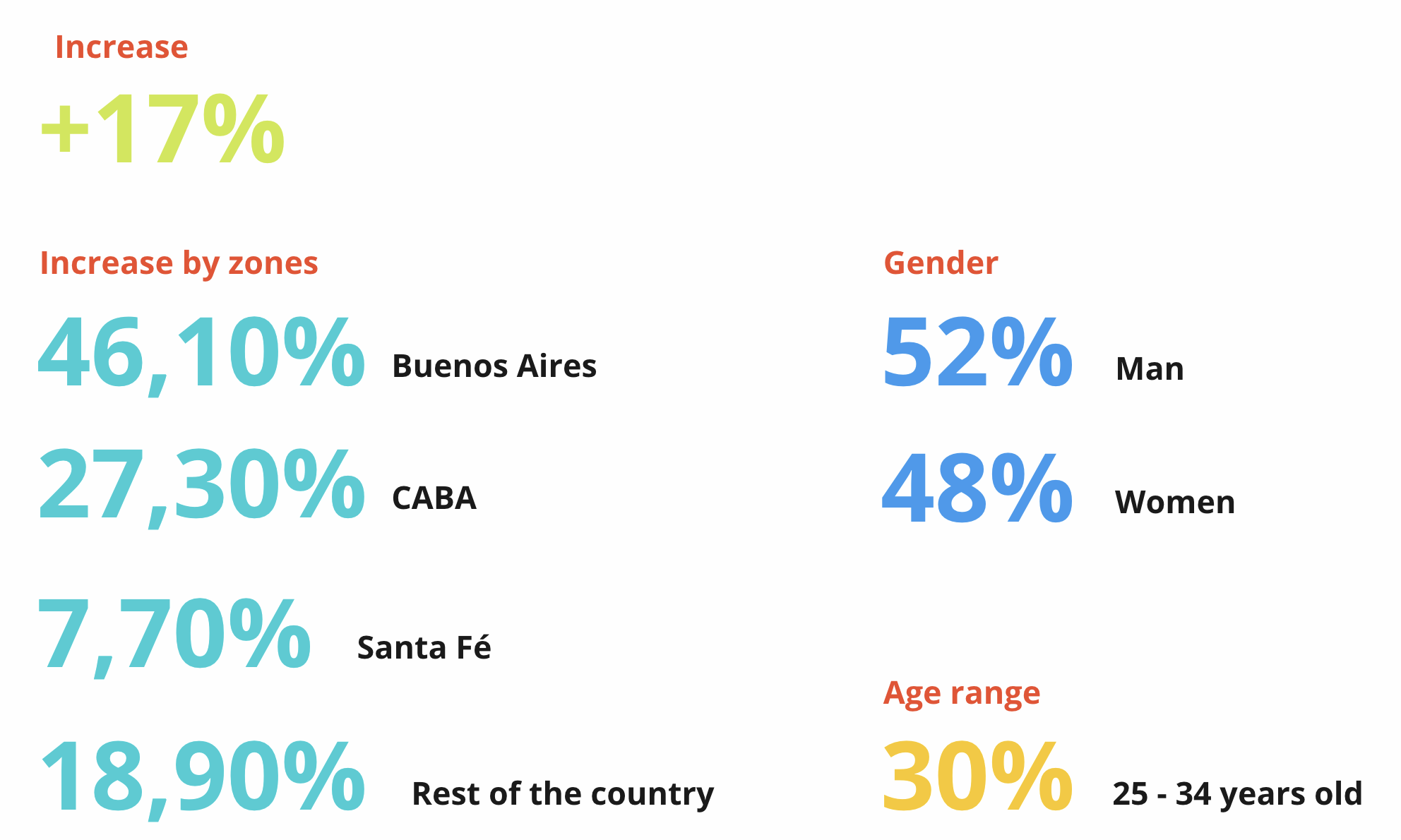

Most potential users find information in different places. They browse many sites and also rely on word of mouth for the best used car information.

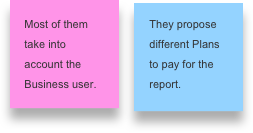
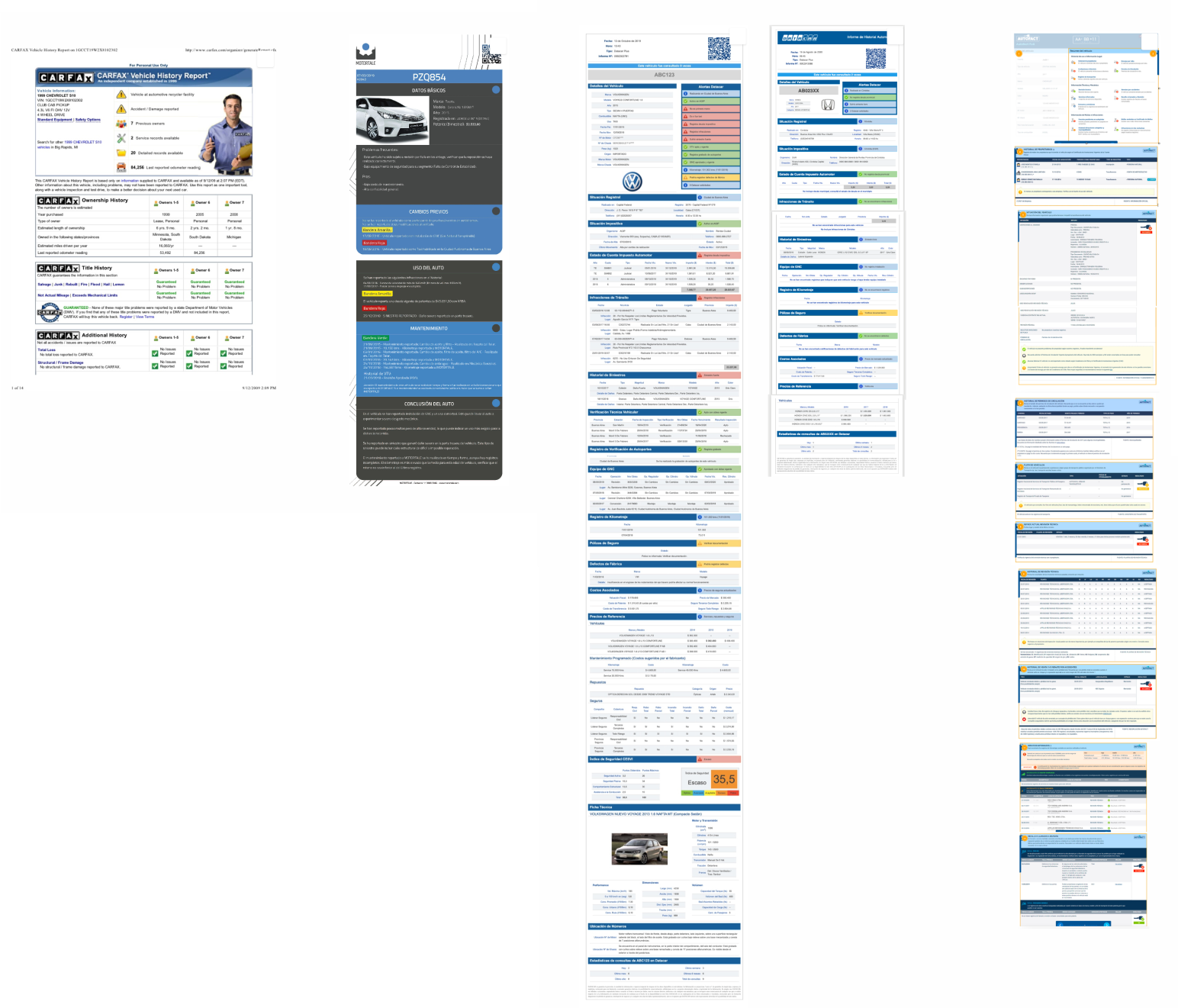
Key considerations:
Landing Page: We quickly sketch out some ideas and discuss how to improve the purchase process.
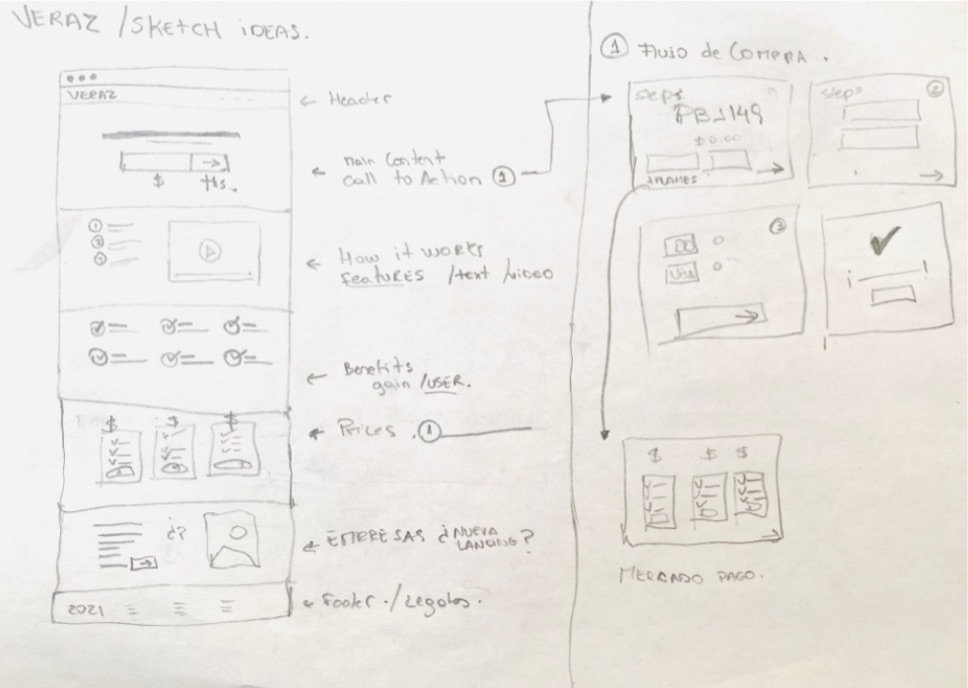
We focused on refining the purchase process and crafting guidelines for the wording. Our aim was to ensure clarity and create a smooth, seamless flow for the entire purchase experience.
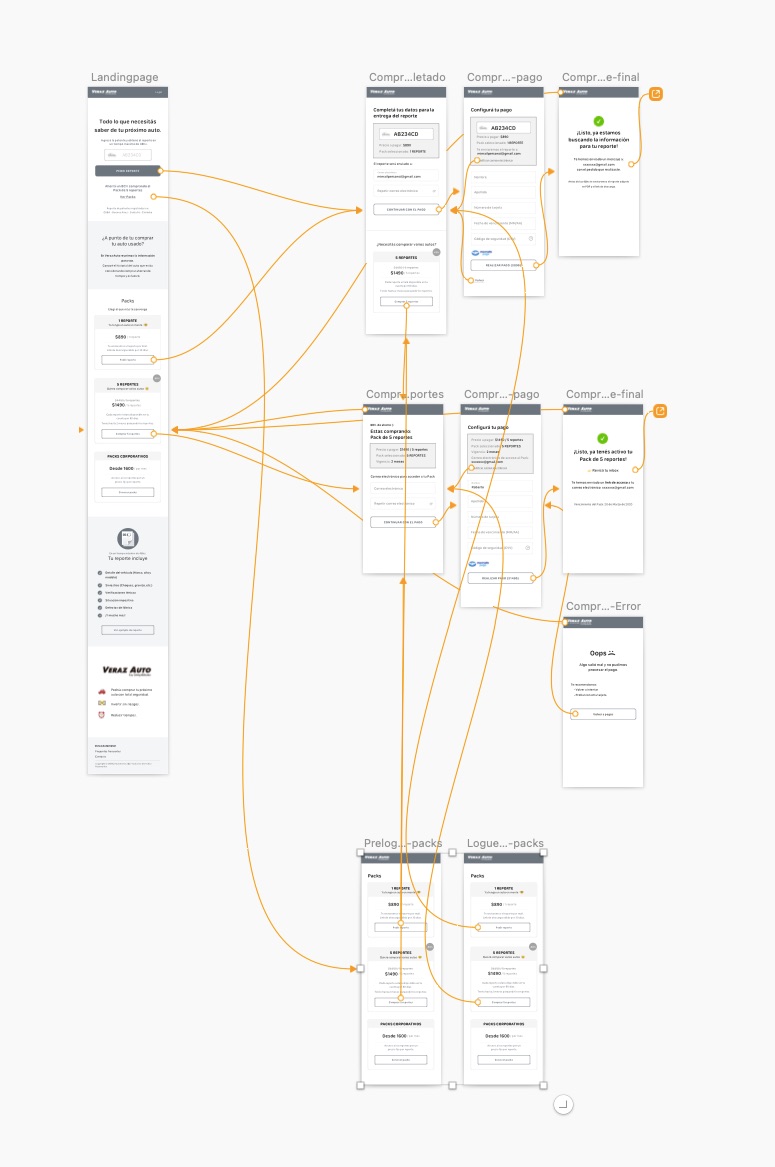
Suscription process analysis
Report: We focused on determining what information to display and how to present it. We used icons and colors to help users quickly grasp the most significant aspects to consider before buying a used car.
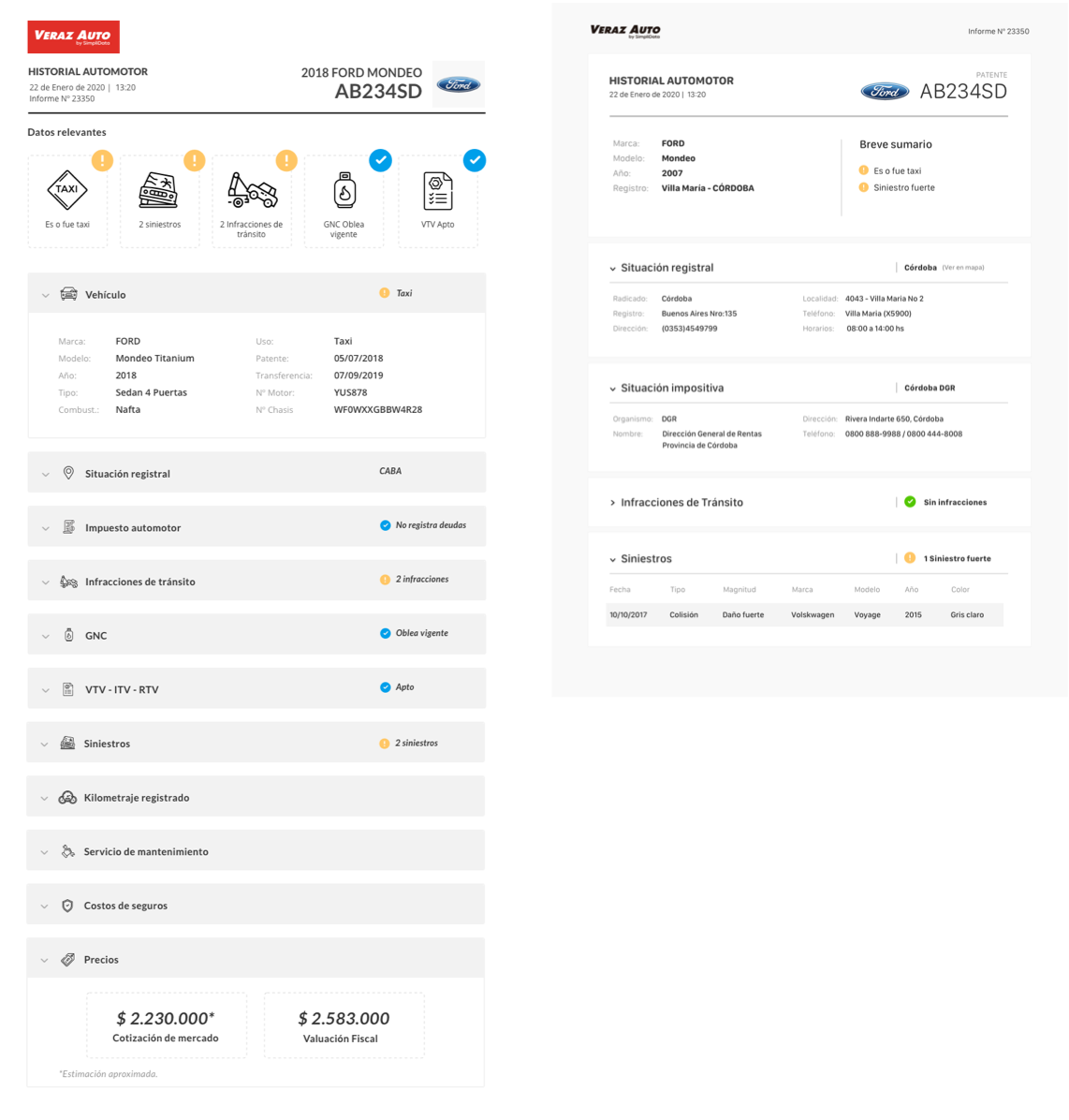
We analyze two possible segments:
B2C: The end consumers who are looking to buy a used car.
B2B: The companies that can provide reports to these end consumers.

Created by our stakeholders, who actively participated in crafting our user profiles.
We focused on the B2C segment and created a persona to gain a deep understanding of our target audience.
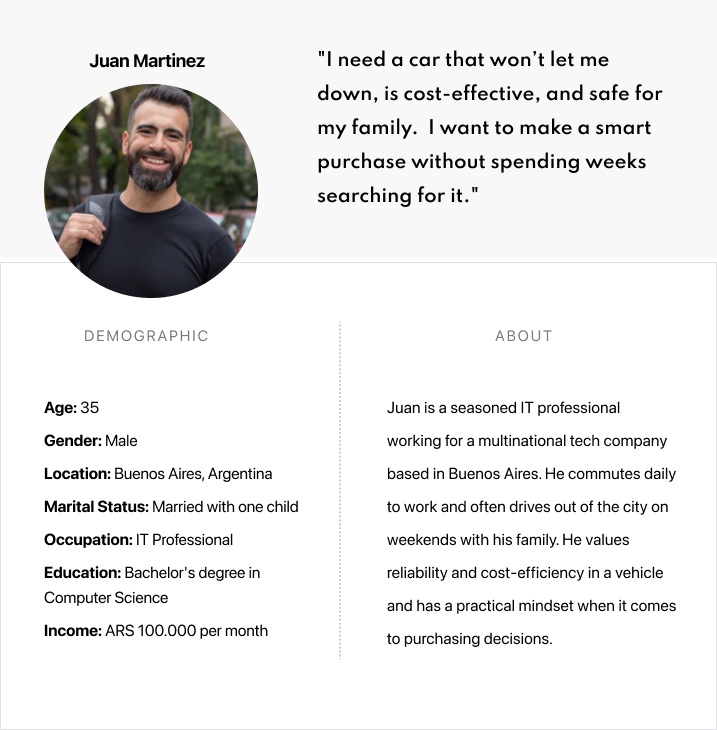
We've identified two key moments in the car-buying journey where the report plays a crucial role. The first occurs before personally inspecting the car, and the second follows after the inspection to double-confirm the car's condition.
At these stages, we can offer different prices to make the purchase smoother and more appealing for buyers.
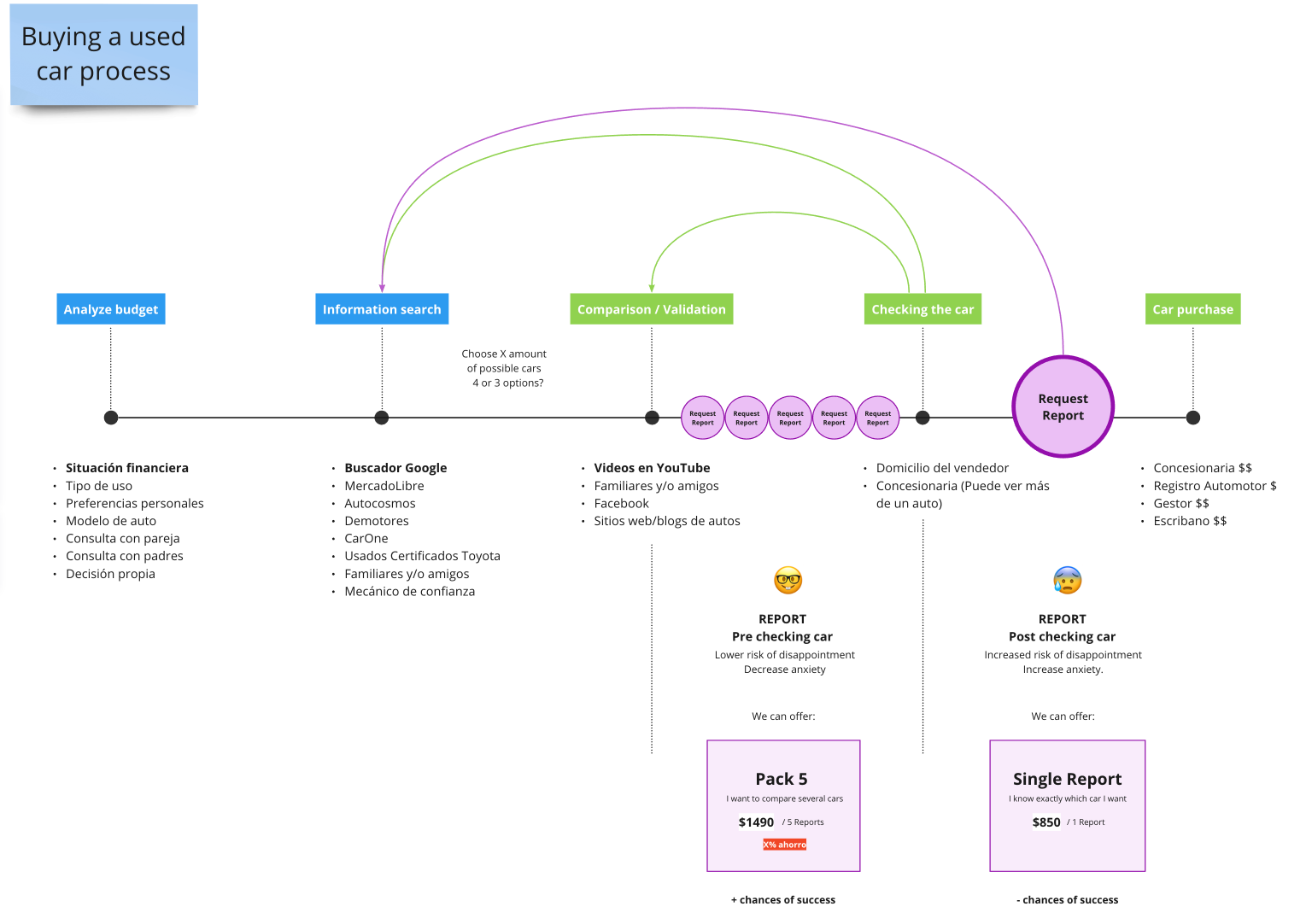
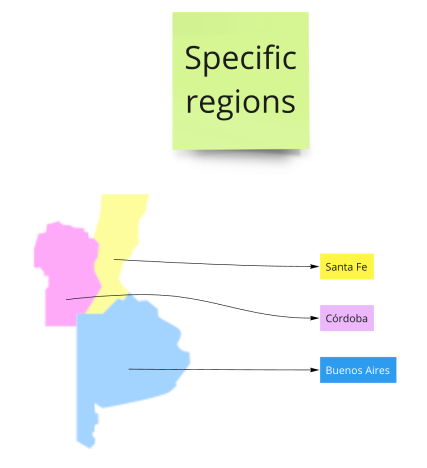
It was decided to start working exclusively in the best-selling used car areas to maximize impact and leverage market demand. By focusing on these high-demand segments, we aim to efficiently allocate our resources and achieve quicker, more substantial results.
After numerous productive discussions, we defined various aspects of the final report. It was essential to incorporate the brand's visual identity into our final design. Some decisions were made out of necessity, while others aimed to convey the depth of our analysis and research.
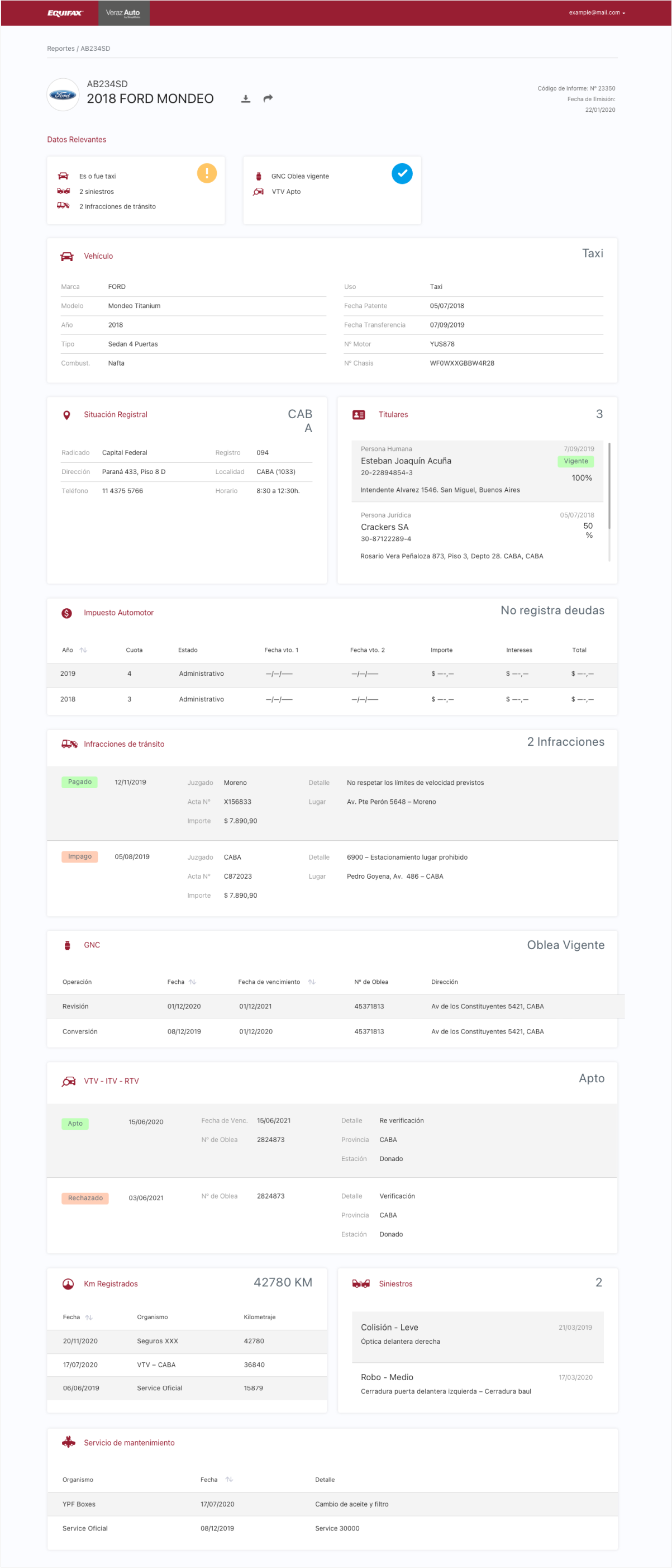
Digital Report
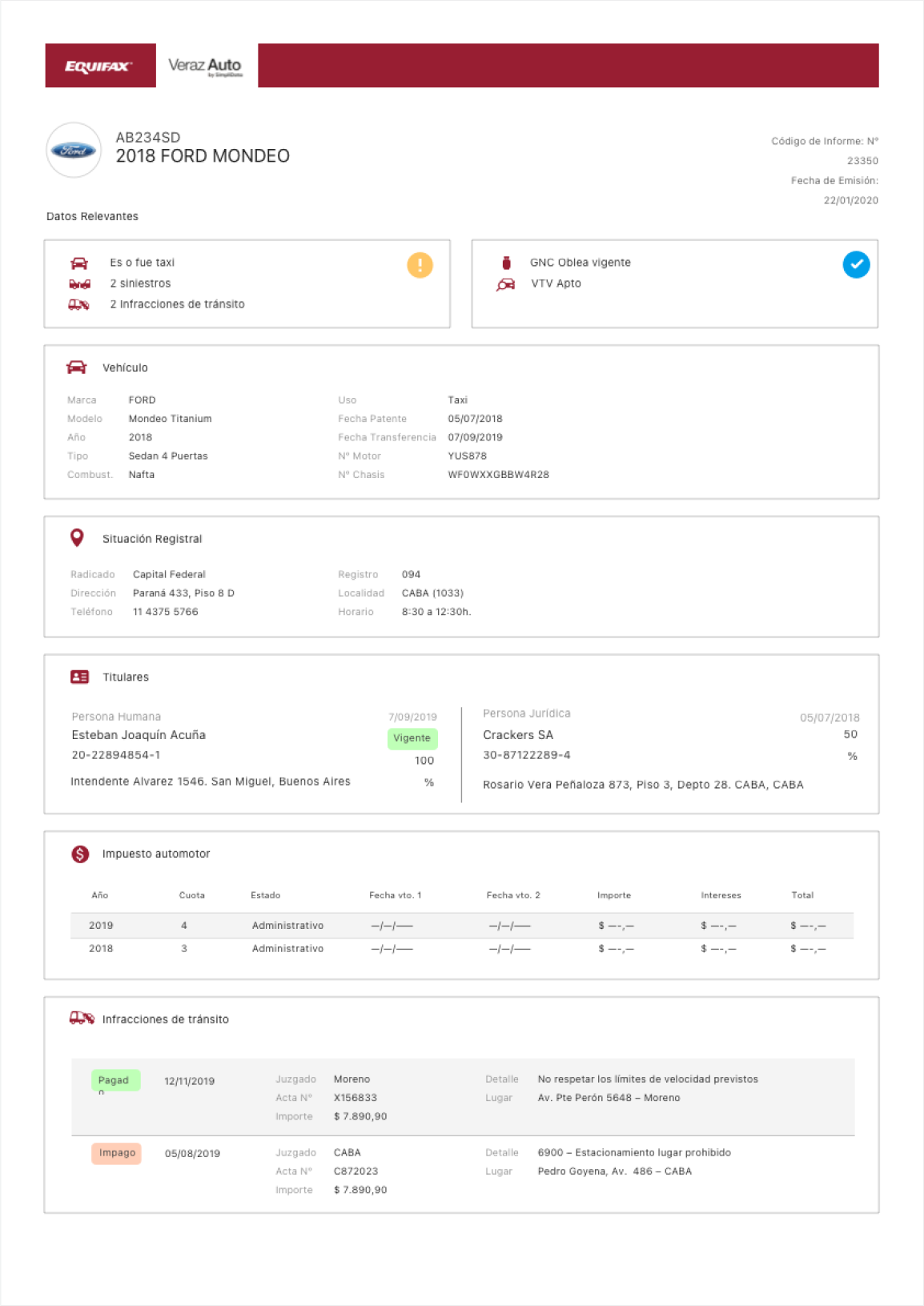
Print Report
We conducted our first test with four men who were pre-selected by the company. These individuals matched the profiles identified in our user analysis.
This work demonstrates that the Report can significantly guide and assist users in the purchase process. However, we encountered some limitations related to business practices and cultural behaviors.
We strongly recommend a thorough analysis of the information sources used to create the Reports. In Argentina, informality is common, making it sometimes impossible to obtain a comprehensive report on used cars. There is no centralized source for used car information. Therefore, the only way to have a more precise report on a used car is through a new, detailed inspection by a certified mechanic.